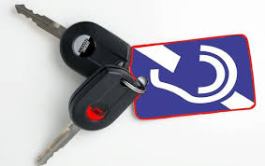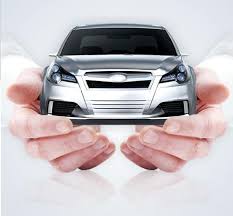Quando falamos em carro com isenção de impostos a primeira imagem que vem à nossa mente é uma pessoas de cadeiras de rodas, com mobilidade reduzida ou com algum tipo de doença mental.
Mas quem pode comprar carros com isenção de impostos?
A lei que beneficia os deficientes é muito mais ampla do que se imagina. Um simples desvio de coluna ou uma atrite pode ser suficiente. E não apenas os deficientes tem esses direito, a legislação atual estendeu esse benefício para os pais ou responsáveis de pessoas nessas condições, ampliando os potenciais beneficiários. Estima-se que cerca de 40% das famílias brasileiras possam ter direito e não sabem.
Legislação que regulamenta a compra de carro para deficiente
Inicialmente a compra de carro com isenção de impostos foi estabelecida pela lei nº 8.989 de 24 de fevereiro de 1995 posteriormente alterada pela lei nº 10.690/2003.
Posteriormente a lei nº 11.841/2009 trouxe novas disposições como ampliação do prazo de vigência e inclusão de novas patologias que apresentaremos a seguir.
Quando o benefício pode ser utilizado
A lei dispõe que a isenção na compra de carro para deficientes pode ser exercida apenas uma  vez a cada dois anos, sem limite para aquisições.
vez a cada dois anos, sem limite para aquisições.
Mas é preciso ficar atento para não ter “dor de cabeça”, se o portador de necessidades especiais quiser vender o carro antes de completados dois anos, no caso de isenção de Imposto sobre produtos importados, e 3 anos, no caso de isenção de Imposto sobre circulação de mercadorias e serviços, terá de arcar com todos os impostos que deixaram de ser pagos com os acréscimos legais (juros e atualização monetária).
Lista de doenças que dão direito a comprar carro com isenção de impostos
Como vocês podem perceber a lista de patologias que dão direito a pessoa comprar carro com desconto é extensa. Verifique se você ou alguém que você conhece se enquadra.
- Autistas
- Deficiência visual
- Deficiência Mental severa ou profunda
- AVC – Acidente Vascular Cerebral
- Fibrose cística (mucoviscidose)
- Amputação ou ausência de membro
- Tendinite Crônica
- Artrose
- Talidomida
- Linfomas
- Paralisia cerebral
- Próteses internas e externas, exemplo: joelho, quadril, coluna, etc.
- Nefropatia grave
- Hepatopatia grave
- Cardiopatia grave
- Membros com deformidades congênita ou adquirida
- Amputações
- Paralisia infantil
- Poliomielite
- Doenças neurológicas
- Doença de Parkinson
- Espondiloartrose anquilosante
- Cegueira
- Hanseníase
- Paralisia irreversível e incapacitante
- Problemas nos joelhos (mesmo que tenham sido operados)
- Paraparesia
- Paraplegia
- Monoplegia
- Monoparesia
- Triplegia
- Tetraplegia
- Tetraparesia
- Triparesia
- Hemiplegia
- Alienação mental
- Neoplasia maligna
- Síndrome de Imunodeficiência adquirida (HIV)
- Câncer
- L.E.R.- lesão por esforço repetitivo:
- Bursite
- tendinite graves
- Artrite
- Nanismo – baixa estatura
- Próteses internas e externas
- Problemas graves na coluna:
- Bico de papagaio
- Escoliose graves
- Hérnia de disco
- Lordose
- Moléstia profissional
- Neuropatias diabéticas
- Tuberculose ativa
- Esclerose múltipla
- Nanismo (baixa estatura)
- Seqüelas de talidomidas
- Estados avançados da doença de Paget (osteíte deformante)
- Doenças desconhecidas degenerativas
- Mastectomia (retirada de mama)
- Manguito rotador
- Lesões com sequelas físicas
- Contaminação por irradiação
- Síndrome do Túnel do Carpo
- Renal Crônico com uso de (fístula)
Como dissemos anteriormente, a isenção podem ser utilizadas pelo portadores das doenças mencionadas condutoras ou não condutoras.
A condição pessoa autista ou de portadora de deficiência mental severa ou profunda deve ser definida de acordo com os critérios e requisitos estabelecidos pela Portaria Interministerial SEDII/MS nº 2, de 21/11/2003.
Como solicitar o benefício
Agora que você já sabe quem pode comprar carros com isenção de impostos a pergunta que vem em seguida é: como solicitar o benefício?
Para solicitar o benefício a pessoa deve dirigir-se ao Departamento de Trânsito (Detran) de seu estado, e junto a perícia médica, laudo atestando a condição de portador de qualquer das patologias citadas.
Uma vez com o laudo em mãos, o beneficiário deve, primeiramente, procurar a Secretaria da Receita Federal para solicitar a isenção do Imposto sobre Produtos Industrializados (IPI). Agora é preciso ter um pouco de paciência, o prazo para o deferimento do pedido é em média 2 meses.
No caso dos demais impostos: Imposto sobre circulação de mercadorias e serviços (ICMS) e Imposto sobre propriedade de veículos automotores (IPVA), o pretendente deve dirigir-se à Secretaria da Fazenda do Estado correspondente, com o laudo, e solicitar a isenção. O processo dura em média 45 dias até o deferimento.
Se você quiser mais informações a respeito orientamos a procurar um posto de atendimento do Detran.
Selecionamos o vídeo abaixo que vai trazer mais informações a respeito dos assuntos abordados aqui.

 Mulheres já representam metade dos consumidores que compram carros ou melhor 50% do público consumidor. Alguns pontos que chamam a atenção delas na hora de adquirir um modelo. A facilidade de dirigir, o design externo, o espaço interno e, principalmente, a altura do banco do motorista encabeçam a lista. Seja aventureira ou caseira, casada ou solteira, com ou sem filhos.
Mulheres já representam metade dos consumidores que compram carros ou melhor 50% do público consumidor. Alguns pontos que chamam a atenção delas na hora de adquirir um modelo. A facilidade de dirigir, o design externo, o espaço interno e, principalmente, a altura do banco do motorista encabeçam a lista. Seja aventureira ou caseira, casada ou solteira, com ou sem filhos.
 Identificamos hoje que os carros não são apenas utilizados para o luxo, temos uma necessidade que nos mobiliza a comprar carros melhores e mais confortáveis.
Identificamos hoje que os carros não são apenas utilizados para o luxo, temos uma necessidade que nos mobiliza a comprar carros melhores e mais confortáveis. faz sentido ter um segundo carro (aquele para “evitar o rodízio”), como mostra este texto do site Exame.com. Se a família já tem um carro, ela pode pensar em apenas o marido ou a esposa andar de carro e o outro usar táxi. Assim, eles podem economizar mais e em vez de ter dois carros populares, podem até pensar em ter apenas um único carro, mais confortável.
faz sentido ter um segundo carro (aquele para “evitar o rodízio”), como mostra este texto do site Exame.com. Se a família já tem um carro, ela pode pensar em apenas o marido ou a esposa andar de carro e o outro usar táxi. Assim, eles podem economizar mais e em vez de ter dois carros populares, podem até pensar em ter apenas um único carro, mais confortável.


 When state officials began adding up requests for future water allocations from federal, state, local, and private interests, plus nearly 9,000 claims from existing river users, they totaled more than the river’s average 8.8 million acre-foot annual flow. The situation seemed impossible. But in 1978 Montana’s Board of Natural Resources and Conservation settled two huge requests when it ordered that 5.5 million acre-feet of water be left in the Yellowstone for the sake of both good water quality and a stable habitat for fish and wildlife.
When state officials began adding up requests for future water allocations from federal, state, local, and private interests, plus nearly 9,000 claims from existing river users, they totaled more than the river’s average 8.8 million acre-foot annual flow. The situation seemed impossible. But in 1978 Montana’s Board of Natural Resources and Conservation settled two huge requests when it ordered that 5.5 million acre-feet of water be left in the Yellowstone for the sake of both good water quality and a stable habitat for fish and wildlife.
 To assess the prospects for corporate bonds, it is common to compare them against UK government bonds (known as gilts). At present the signs are encouraging. In 2011 gilts increased in price as investors sought safe-haven assets. This drove their yield down – the ten-year gilt now yields around 2%. Corporate bonds on the other hand were largely overlooked, so prices and yields remained relatively stable.
To assess the prospects for corporate bonds, it is common to compare them against UK government bonds (known as gilts). At present the signs are encouraging. In 2011 gilts increased in price as investors sought safe-haven assets. This drove their yield down – the ten-year gilt now yields around 2%. Corporate bonds on the other hand were largely overlooked, so prices and yields remained relatively stable.

 If you’ve already used your full ISA and pension
If you’ve already used your full ISA and pension 